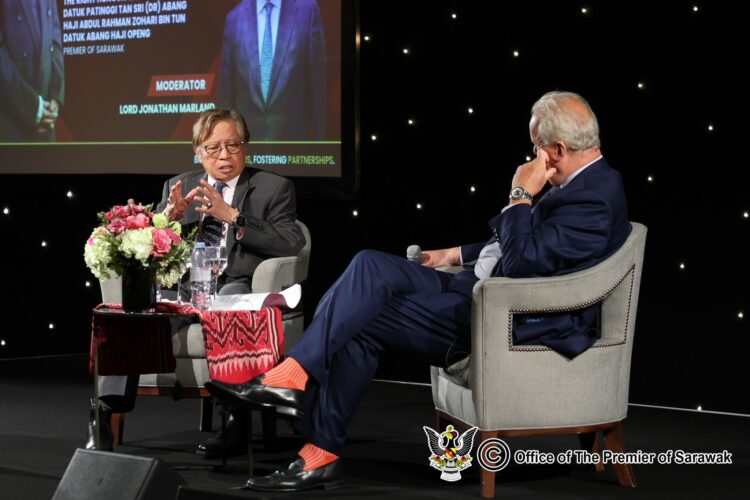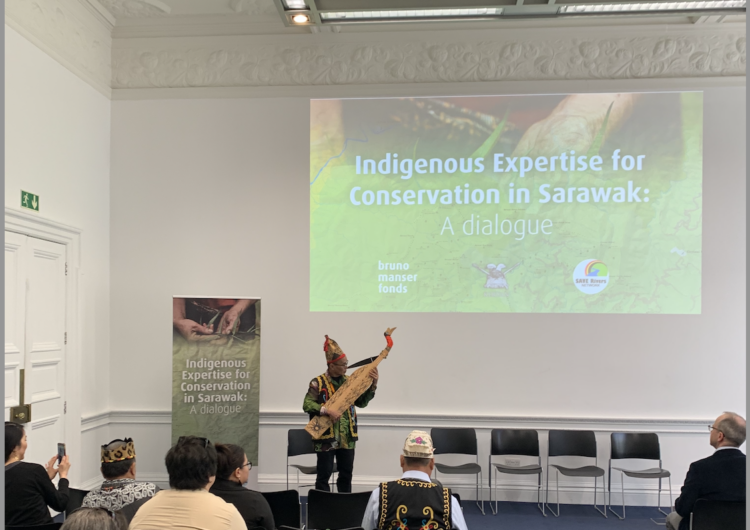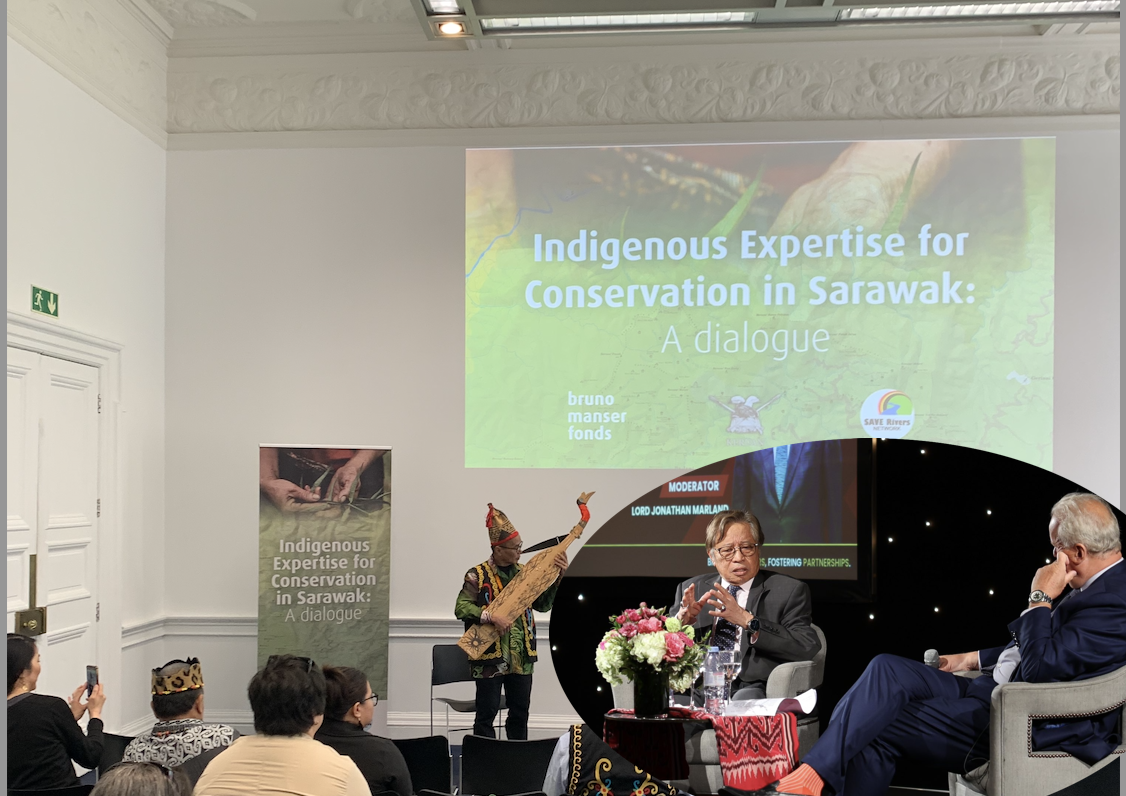The premier of Sarawak and his entourage were doing the rounds in Britain all last week as they continue to drum up plans for projecting the richly resourced state into a cutting edge future.
Fair enough, it’s an exiting aspiration and there are businesses all over the UK and beyond who are interested in teaming up in joint ventures with the now cash rich petroleum economy.
One of the beneficiaries was a semi-conductor producer in Wales which Abang Jo and his ever present deputy, Awang Tenga, took the time to visit on Tuesday to mark Sarawak’s investment in their technology.
Curating the tour was none other than the businessman, Jonathan (Lord) Marland (whose self-declared finest hour was persuading Najib to pour billions of ringgit of Malaysian public money into London’s Battersea Power Station, a project which has hugely benefitted the private developer EcoWorld, of which he remains a director).
The self-appointed Chairman of his own private company, somewhat confusingly named the Commonwealth Enterprise & Investment Council, Marland moderated an ASEAN event focused on Sarawak’s investment ambitions on Saturday.
This included a ‘Fireside Chat’ with the premier about “Sarawak’s global vision: Sustainability, innovation and strategic partnerships“.

Given the rightful emphasis on sustainability and the future, it was therefore a shame that throughout that long week in the UK the premier and his top team failed to find time to join a key celebration of Sarawak’s unique and most exciting prospect for the future, namely its biodiversity and native knowledge, at London’s prestigious Royal Geographical Society.
“Put It In A Museum” – Taib Mahmud
Shortly before the decades long rule of Taib Mahmud, who stripped Sarawak almost bare in league with the timber industry, a key scientific mission was launched by the RGS into the interior of Sarawak, the area now designated as the Mulu World Heritage Site by UNESCO.
That year and a half long expedition was being commemorated this very week in London by hundreds of members of the Society and many of the eminent scientists who took part. Even more significantly, native experts from Sarawak’s indigenous communities were also flown over to join the event and lend their recollections and expertise.
Having been invited to engage over a year ago, the Sarawak state government did designate two advisors to attend and speak at the two day gathering in this prestigious setting next to the Royal Albert Hall in Kensington.
However, the premier and his team missed their opportunity to be associated with the event or its follow-up which was a celebration of Sarawak Indigenous Expertise hosted by the Bruno Manser Fund.

Had they done so, the Sarawak delegation would have without doubt achieved the sort of global platform and media interest that has tended to elude their innovation efforts so far. For, when it comes to the future and cutting edge science, biodiversity is where it’s at.
Likewise, recognition of the previously under-appreciated wealth of knowledge held by indigenous communities who live in such regions (particularly Sarawak) is now established and the world is looking for leadership and commitment by rainforest nations to this cause.
It is time for Sarawak’s leadership to wake up to the advantages of their state in this respect. When asked many years ago by this writer what the future should be for indigenous communities, Sarawak’s former chief minister Taib Mahmud had quipped “you can put them in a museum”.
Yet, at the Royal Geographical Society this week all the discussion was around the exciting potential to incorporate the generations of learning by Sarawak’s forest peoples into an academic programme that could lead to valuable high tech discoveries for the future.
International School of Biodiversity & Indigenous Knowledge Waiting To Be Built In Sarawak!
Led by the scientist Robin Hanbury-Tenison speakers who had attended the 1977/8 expedition to Mulu paid tribute to the knowledge and assistance of their native guides. They had led the international team to identify thousands of plant, animal and fungi species till then unknown to the wider world.
Owing to Taib’s disdain for such ‘backward’ knowledge, and his focus on felling the jungle instead for timber, plans which had been set in motion at that time to establish a place of advanced learning have lain fallow ever since.
Adenan Satem, who later told a London audience that he had read and understood the urgency around species extinction and the global loss of biodiversity, changed that attitude. He instituted a maxim that there should be “No More Logging and No More Palm Oil” during his own short period in office.
He also halted Taib’s dam-building programme designed to “industrialise” the world’s oldest living jungle and to turn its vibrant rivers into machines to generate power for export.
However, such reforms are easier to articulate than police and, despite pledges by the present administration to uphold those values, unlicensed logging continues too often unpunished in the state, threatening any attempt to rescue the disastrous impact of earlier decades.
And now the drive to build dams is back.
Smart science demands the opposite. More focus is needed on the value of the world’s fast diminishing wells of evolutionary information, such as Borneo, and on re-generating damaged forests for the variety of life they hold and their carbon capture potential against climate change.
Scientists attending this captivating event all had the same question as to what level of understanding exists amongst the present leadership of the state concerning the value of its most precious and significant asset for the future, namely these remaining forests?
‘Billions of dollars’ of scientific knowledge lie untapped in the DNA of Sarawak’s forests, thundered Professor Ian Swingland, one of the veterans of the original RGS expedition. Native knowledge is there on hand to help international scientists unlock it.
Instead of coming to listen to that message, the Sarawak leadership took further time this week to visit the lobbying HQ in London for dam builders (the International Hydropower Association).
More dams equal more destruction of Sarawak’s biggest longterm future asset, which is life itself.
The vision outlined this week was for a genuine global first, a School of Biodiversity & Indigenous Knowledge that could be based in Mulu to host students and scientists the world over to conduct potentially world changing research into Sarawak’s unparalleled natural heritage.
Sarawak’s academics would find a place alongside indigenous experts, whose specialist knowledge could earn them strings of doctorates at western universities in the fields of botany, biology and indeed medical science. Students would come from across the globe to learn from the forest directly.
That project has yet to catch the interest of Sarawak’s leadership, it seems. However, they should bear in mind that with the issues of Extinction and Climate Change currently at the top of the global agenda it is in this field that Sarawak has its best opportunity to seize the agenda for cutting edge technology and to act as a leader for the future.
No one remarked on this latest state government visit to the UK outside of Sarawak’s local media. However, an initiative such as the one discussed by the RGS scientists just minutes across town from those events would snatch global headlines and worldwide goodwill for the once ‘backward’ state of Sarawak.

